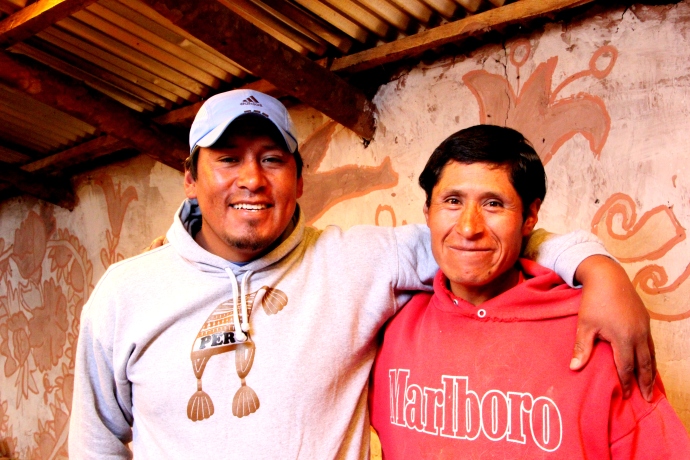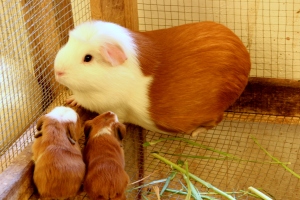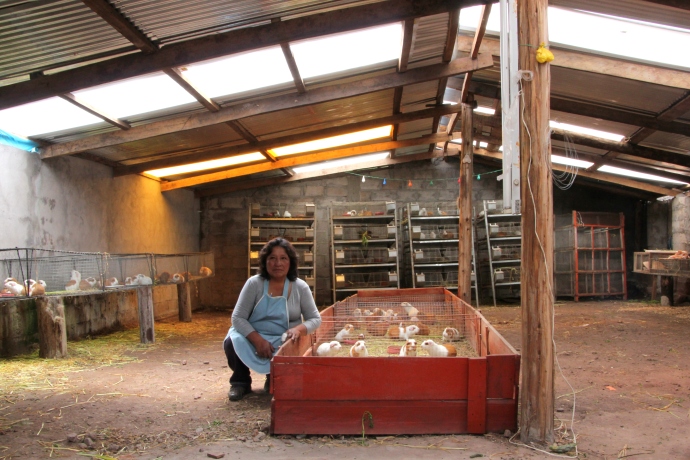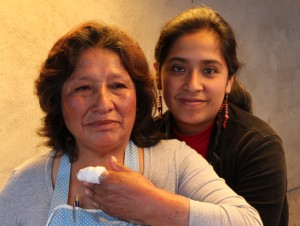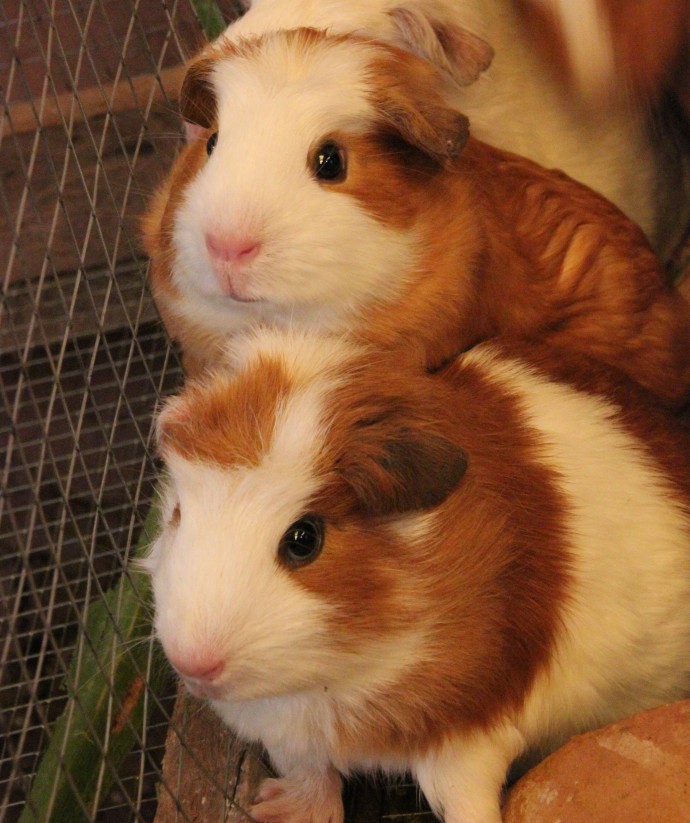 If you’re going to eat guinea pigs (and in Peru, you’re going to) you’re going to have to raise guinea pigs. Which plenty of Peruvians do, in their kitchens, in their sheds, in a random, atomized way.
If you’re going to eat guinea pigs (and in Peru, you’re going to) you’re going to have to raise guinea pigs. Which plenty of Peruvians do, in their kitchens, in their sheds, in a random, atomized way.
To an agro-ecologist like David Rocca, who coordinates Heifer’s “Good Living” IMAGEN (a local NGO) project in Puchyara, Peru, this represents a huge missed opportunity. To his mind, cuy equals the possibility of a commercial venture on a scale that can lift an entire community out of poverty. David is one of the unbelievably committed people working with local communities in partnership with Heifer, (like Cleida and Claudio from my previous Peru posts) who have the vision, plans, expectations, personal relationships with families, and follow-through to make real change happen. And it does take vision to look at a guinea pig and see the cash rolling in.
But here’s how it happens: When David started to work with Sebastian and Elena Huillca (and their three children), the family had 2 donkeys, 4 cows, 1 horse, a passel of guinea pigs in a rough shed, and a piece of land one hour ‘s walk away. The house was a mess and the yard was worse. In Heifer workshops, the family learned a few new habits that literally changed their life. They established a Healthy Homeand gave each child his/her own room.
They built a shed for their animals, collected the manure that was now in one handy place, and with the help of some industrious Heifer worms, used that compost to fertilize their new bio-garden where they grow enough vegetables to eat and to sell in the local market.
The family planted fruit trees. They learned how to use local clay to plaster (and beautifully decorate) their house, instead of buying expensive materials they couldn’t afford. And in the guinea pig shed, they covered the walls in clay (with happy drawings), built compartments to separate males, females and babies, grew better forage to feed them, and began keeping breeding records to control reproduction and improve genetics.
The Huillcas followed David’s teachings and put ashes in the entrance of the house to kill bacteria, used meds to treat sick animals, and bred the gift of new Heifer guinea pigs with the local stock to double the weight of their piggies. One year later, they’ve both doubled the number of their pigs, and the price they get per cuy at market. (And both their daughters are attending college!)
David is such an ardent believer in the potential of guinea pigs, he contends that profits will begin to repay Heifer’s investment in 2-3 months (including passing on the gift). And his math works. Guinea pigs are ridiculously fertile; females can have 3 pregnancies a year, and the better the feed, the quicker the baby comes. What David has taught his farmers is that if they take care of their guinea pigs— guinea pigs will pay off– big time– for the whole family.
Cuy is served in almost every restaurant in Peru, from sidewalk cafes to the swankiest eateries, so the demand is virtually unlimited. Its meat is high protein, low cholesterol and supposedly truly delicious (that’s right, I wimped out).
And unlike bigger animals that demand grazing and herding, guinea pigs can be raised on small plots of land, and handled by older beneficiaries like Felipe Ayachu, who is trying to keep his farm running despite an illness, with only his devoted daughter to help him.
David’s also inspired enthusiastic spark-plugs like Dolores Delgado – whose sterling example of taking the guinea pig ball and running with it has been so inspiring, she’s moved her community’s Heifer involvement from 3 families to 35 (out of 40!)… built a whole new guinea pig barn and organic garden, and doubled the price of the town’s pigs! It’s what she promised Heifer President Pierre Ferrari she would do when he visited Puchyara last year, a meeting she remembered with overflowing tears and copious hugging.
In fact, it’s the example of Heifer beneficiaries like Dolores, Felipe, and Sebastian who start showing up with big, fat guinea pigs for sale, their homes shining with fresh clean designs, and their gardens bursting with produce, that catches neighbors’ attention and spurs participation in the project. These early adopters have become Heifer/IMAGEN promoters, their communities have organized, and now David has the success stories and community backing to intercede with municipal authorities to continue to invest in the materials, seeds and structures that will make Puchyara Pigs the toast of nearby Cusco.
A succulent cuy may never pass my lips, but I predict that before long, David’s dream will be a yummy roasted reality.

